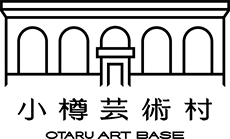
History and art mingle together.
Otaru prospered as an entrance on the sea and built the foundation of the Hokkaido economy as the center of the economy. Japan’s and the world’s masterpieces of art and crafts brilliantly decorating the first half of the 20th century, when Otaru prospered most, are displayed and exhibited in each of the buildings that were built in the same period.
-
Nitori Museum of Art
Former Hokkaido Takushoku Bank Otaru BranchIt is the venue at which writer Takiji Kobayashi worked as a banker. The vaulted ceiling in the foyer, the former bank hall, which reaches up to the second floor is supported by 6 impressive ancient columns. The fourth floor displays Japanese paintings by Taikan Yokoyama, while the third floor displays Western art by Japanese artist Ryusei Kishida and other artists from around the world. On the second floor wooden sculptures by Koun Takamura and his disciple are displayed; the first floor has the Louis Comfort Tiffany Stained Glass Gallery; and the basement floor is an Art Nouveau and Art Déco Glass gallery.
-
Art Nouveau and Art Déco
Glass GalleryNitori Museum of ArtB1At the turn of the nineteenth century, when Otaru was flourishing in international trade, the Eiffel Tower was being built in France, and a new artistic movement known as Art Nouveau swept across Europe. Here you can view the various masterpieces of prominent artists of that era, such as Emile Gallé, the Daum Brothers, René Lalique, Josephe Gabriel Argy-Rousseau, and Victor Amalric Walter.
-
Stained Glass Museum
Former Takahashi WarehouseThe stained glass pieces that were crafted in England between the late nineteenth and early twentieth centuries and were actually part of the window fixtures in churches are exhibited in the museum. In recent years, many of the churches have been torn down due to various circumstances, but these beautiful pieces of art were spared, and through an unusual twist of fate ended up in Japan. Some of the stained glass is inscribed with words and pictures that tell the history from the flourishing reign of Queen Victoria, through the Edwardian Period, and into the era after the First World War.
-
Former Mitsui Bank Otaru Branch
Former Takahashi WarehouseFrom the late years of the Meiji period, to the beginning of the Showa period, there were as many as 25 banks that supported the financial state of Otaru, and it was often referred to as the largest economic city in northern Japan. One of these, the former Mitsui Bank Otaru Branch, symbolizes the glory days of Otaru. The Renaissance exterior is made of bold stonework, with hallways that encircle the vaulted ceiling and beautiful plaster sculptures that adorn the ceiling. Enjoy the many elegant pieces of work, in a dignified atmosphere of the old bank building.
-
Louis Comfort Tiffany
Stained Glass GalleryNitori Museum of Art1FIt features signature pieces of stained glass artwork for churches, made by Louis Comfort Tiffany, who led the Art Nouveau era with creative glass works such as opalescent glass and rainbow-colored Favrile glass. Beautiful artwork comes to light again in Otaru after a period of over one-hundred years.